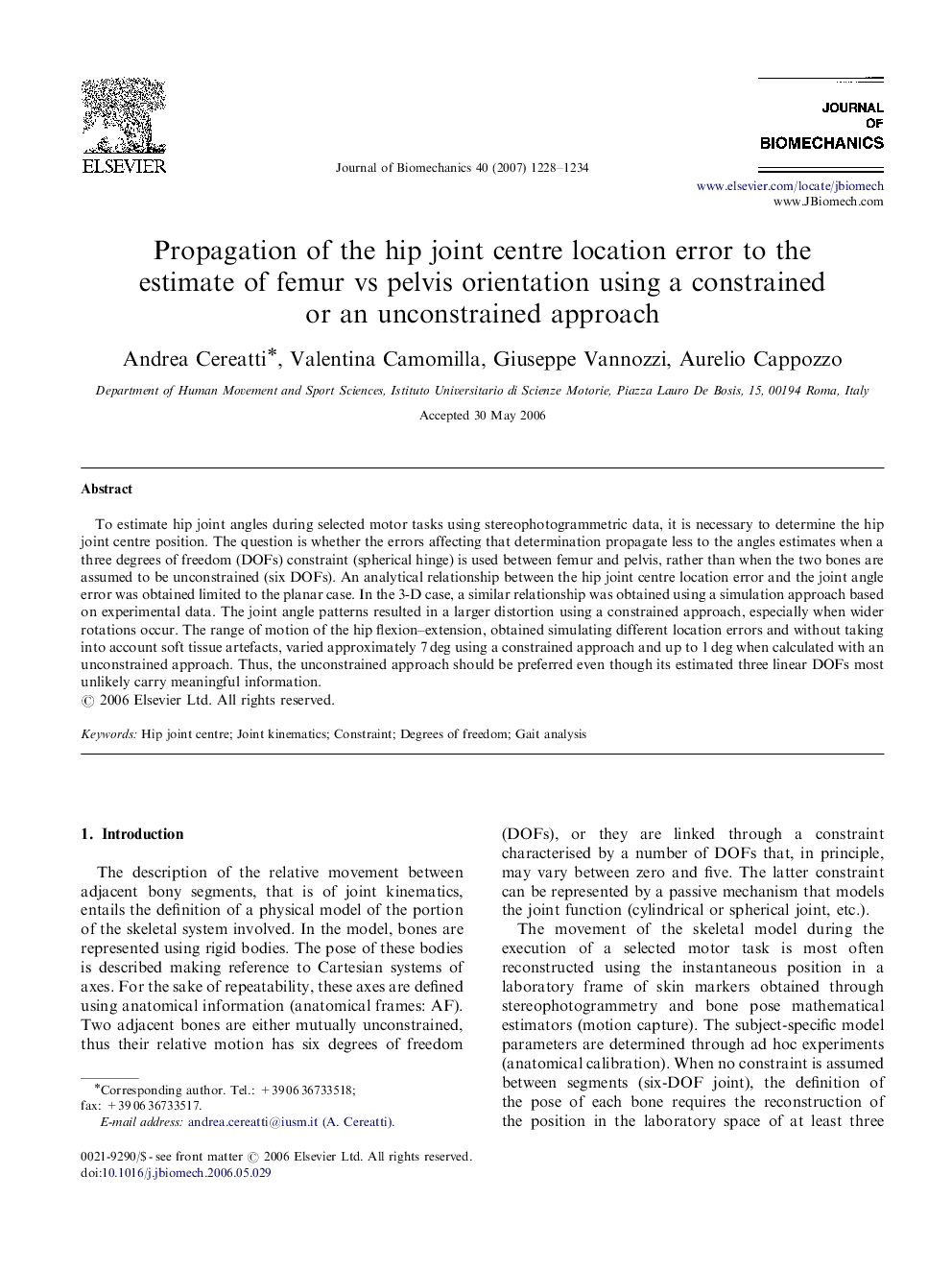| Article ID | Journal | Published Year | Pages | File Type |
|---|---|---|---|---|
| 874534 | Journal of Biomechanics | 2007 | 7 Pages |
To estimate hip joint angles during selected motor tasks using stereophotogrammetric data, it is necessary to determine the hip joint centre position. The question is whether the errors affecting that determination propagate less to the angles estimates when a three degrees of freedom (DOFs) constraint (spherical hinge) is used between femur and pelvis, rather than when the two bones are assumed to be unconstrained (six DOFs). An analytical relationship between the hip joint centre location error and the joint angle error was obtained limited to the planar case. In the 3-D case, a similar relationship was obtained using a simulation approach based on experimental data. The joint angle patterns resulted in a larger distortion using a constrained approach, especially when wider rotations occur. The range of motion of the hip flexion–extension, obtained simulating different location errors and without taking into account soft tissue artefacts, varied approximately 7 deg using a constrained approach and up to 1 deg when calculated with an unconstrained approach. Thus, the unconstrained approach should be preferred even though its estimated three linear DOFs most unlikely carry meaningful information.
